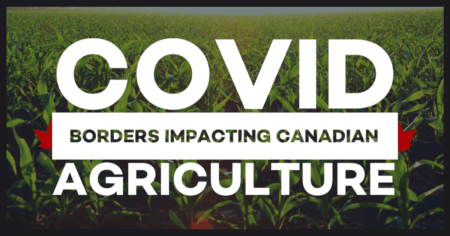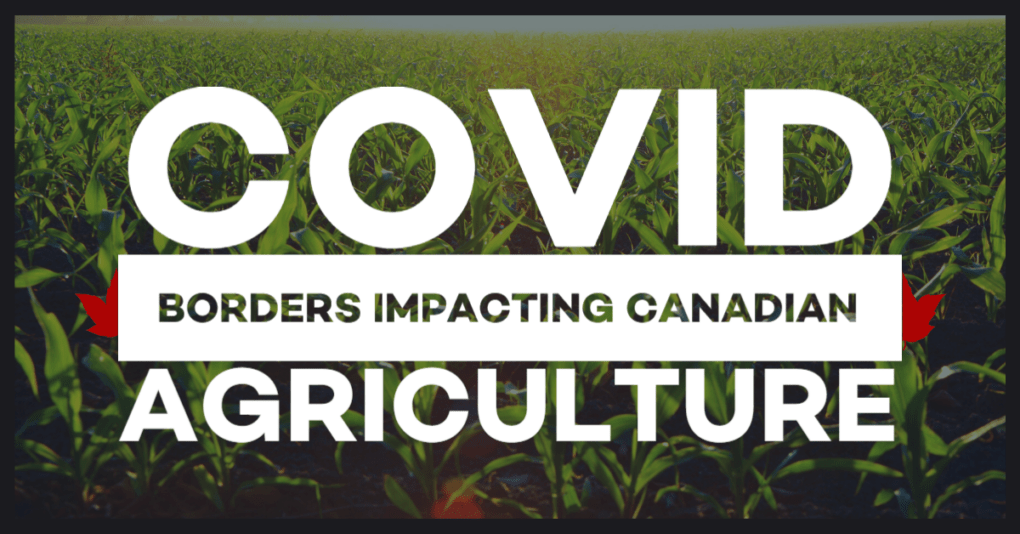How the lack of harvest labour may affect agriculture and the supply of food
Canadians have previously known their grocers to have reliable supply chains, meaning that shelves are fully stocked and it’s a rare event when a store is out of a specific item. However, in the past 3 months, Canadians have been shocked to discover that store shelves can be empty, sometimes for days at a time. Part of this is a result of panicked consumers stocking up on pantry items, a sudden change in demand now that more of us are eating at home, and a change in the supply chain due to this pandemic.
 This change in available grocery items has been frustrating for some, and worrying for others. Not knowing when we will see a return to full shelves, fears of a shortage of fresh produce in the fall or a meat shortage at any moment, are concerns too many shoppers. However, we need to remain calm and informed about what is happening in our food supply system, and grateful for what we do have. I’m reminded of this need to be grateful, as in 2008, when attending a biotechnology conference in Havana, Cuba, I popped into a downtown grocery store, only to find over 50% of the shelf space were empty. Not to mention, the variety was sparse. Canadian consumers are exceptionally fortunate to have such resilient food production and delivery systems, as many other countries lack what Canadians take for granted.
This change in available grocery items has been frustrating for some, and worrying for others. Not knowing when we will see a return to full shelves, fears of a shortage of fresh produce in the fall or a meat shortage at any moment, are concerns too many shoppers. However, we need to remain calm and informed about what is happening in our food supply system, and grateful for what we do have. I’m reminded of this need to be grateful, as in 2008, when attending a biotechnology conference in Havana, Cuba, I popped into a downtown grocery store, only to find over 50% of the shelf space were empty. Not to mention, the variety was sparse. Canadian consumers are exceptionally fortunate to have such resilient food production and delivery systems, as many other countries lack what Canadians take for granted.
We need farm labourers to meet demands
In Canada, farms rely on the employment of seasonal labourers. This is especially the case for cash crops, such as fruits and vegetables, where hand harvesting is required. In 2015, 93% of all agriculture jobs were filled by temporary foreign workers (TFW), with 33% employed in greenhouse production, 26% vegetable and melon production and 23% in the fruit and orchard sector. Statistics Canada reported 54,734 TFW farms in 2018, nearly 20% of all farm employees. Vegetable, melon, fruit and orchard farming, and the greenhouse/nursery production employed more than one-third of its workers with TFW.
For 2020, we don’t yet know what percentage of crop production labour will be filled by TFW, as many of these labourers come from countries in the Caribbean or Latin America. Due to travel restrictions resulting from Covid-19, both in the labourer country of origin and by airlines, many won’t be able to enter Canada and harvest crops this summer. While mechanical harvesters are capable of harvesting some fruits and vegetables, many are too delicate to be harvested this way, require hand harvesting. It is not only the harvesting capacity that will decline, the preparing and packaging of harvested quantities will also be reduced for the products that are harvested mechanically.
What do Canadian food crops look like without TFW?
With such a vast percentage of agricultural labour being foreign workers and with the reduced ability of these workers able to enter Canada, what impacts might be expected? Crystal ball gazing is always uncertain, however, if foreign workers are restricted from harvesting Canadian crops over some, or part of, the next 3 months, reduced supply of fresh vegetables would be expected. As supply is reduced, the price of available products would be expected to rise. Due to the benefits of international trade, any decline in Canadian production would most likely be offset by imports from other countries, helping to keep any price increases as low as possible.
The resilience of the Canadian agricultural industry is something all Canadians should be very proud of. Our nation has a strong food production system that ensures Canadians are consistently supplied with safe, nutritious food. The Covid-19 pandemic will undoubtedly challenge the supply of some Canadian food products, but consumers can be confident that grocery store shelves will be as full as is possible with healthy alternatives.


